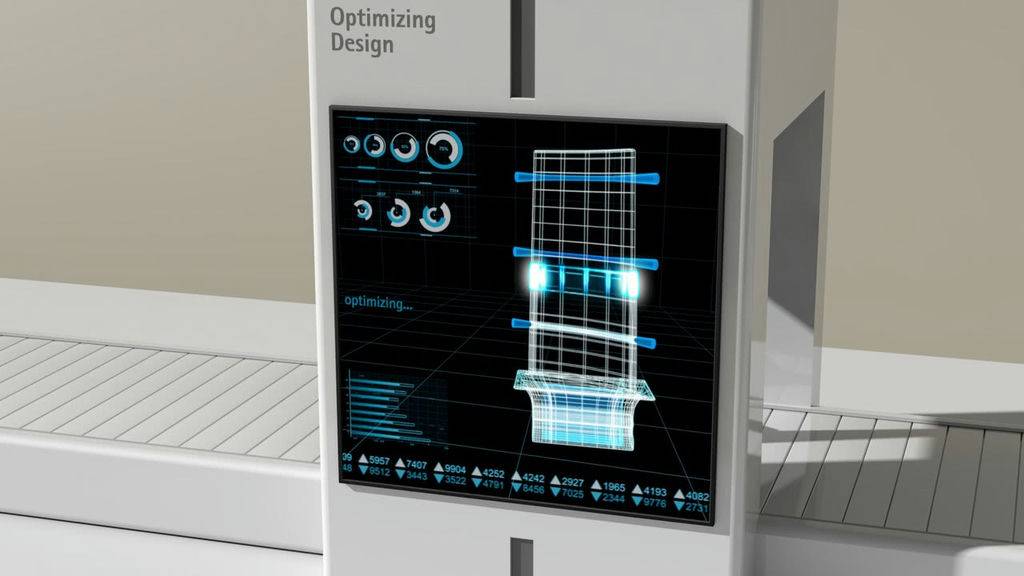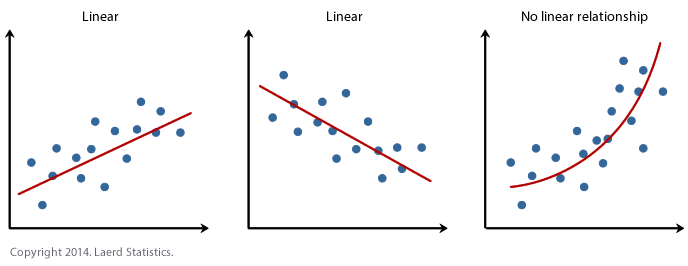Many of you are probably familiar with the series of Movies “Ironman”, where Mr. Stark, an incredibly smart and successful person with amazing skills on science, engineering, design, business, saving the world from chaos, etc… designs and produces an incredible suit with the help of Jarvis, his personal robot assistant with outstanding capabilities of voice and mind recognition, automation, design, engineering, among others.
This appears to be a dream for any engineer and designer (including myself) involved in the process of designing actual machines like aircrafts, cars, electronics, etc. But how far away is such utopia from reality? How are advanced technologies in design and manufacturing engineering bridging the gap between fantasy and today’s/tomorrow’s reality? Here is my opinion.
Generative Design
If you are a designer or working with design engineering you have probably heard about the term of “Generative Design”. First, I will try to clarify the meaning of Generative Design.
Understanding the design process may appear to be trivial but it is not. The process of ideation, creation and optimization of an object, system, machine or even experience has its purpose in aiding humans perform a task or improve the realization of an existing task, for example, transporting humans from A to B through cars, airplanes, trains, etc. As a designer, it is crucial to understand requirements of these tasks and he/she is responsible to provide a creative, realizable and affordable solutions. These solutions are usually produced from particular designer’s know-how, previous experience or similar designs that have already solved similar tasks and requirements in the past.
Through a generative design process, on the contrary, the solution for a given design problem is not created by a human designer but generated by a computer algorithm. You might ask then, what is the role of the human designer if a computer can solve this problem “automatically”? Well, there are plenty of things a human designer has to do to make this work in a proper manner.
Designers need to know as many design requirements as possible. They are a description of what a part, component, system or machine is supposed to do under given conditions. If you are able to quantitatively and explicitly define all of the requirements for the design object, such that different possible design proposals can be quantitatively evaluated between each other, comparing how good or bad they meet those given requirements, a generative design algorithm will provide optimal solutions to that problem in the form of a design proposal. More concretely, in generative design, digital computer algorithms enhance the designer’s capabilities to ideate and conceptualize more rapidly different design proposals. Ideally, such design proposals should be evaluated by criteria such as weight, durability, stiffness, stress, etc.
Today, as a critical part on a design process, through computer simulation (CAE) or physical tests, we implicitly test different concepts or ideas in order to converge to an optimal solution. Generative design is doing the same. The advantage is that generative design will be producing, testing and comparing different innovative solutions or designs, often not imaginable to humans, This happens at an incredible speed since it’s driven by computer algorithms instead of humans. In simple words, a generative design algorithms is like having a new employee; incredibly motivated, very productive, working 3 shifts, superfast- but there is a problem with your new employee. He/she has no experience, criteria or conscience to make decisions.
Such energy and speed is great. However, humans are needed to be in control of these new “employees” in the design room. You can’t (or shouldn’t) give this control to a generative design algorithm to fully create a design ready for manufacture- at least not yet.
In reality, an algorithm, such as topology optimization or genetic evolution algorithms, generates, evaluates and optimizes many new possibilities – a human couldn’t ever imagine or consider. However, the human designer has to evaluate and scrutinize a given subset of optimal results from many different non-quantitative aspects driving the design such as, manufacturability, indirect costing, post processing, lead time, qualification, etc… Then, the designer decides, adjusts and re-starts the algorithm until most non-quantitative aspects are satisfied.
Generative design aids designers to provide a wider proposal of advanced optimal designs that meet a given set of requirements. Also, the algorithms may seem to simplify the human input in the design process, however they bring new responsibilities to fully understand and judge not only the algorithms behind, but as well, the proposals produced by such algorithms.
Additive Manufacturing and Generative Design
When is a design classified as a good design?
a. It is cheap to manufacture
b. It meets all the requirements it is supposed to
c. It is possible to manufacture
The wide proposal of optimal designs provided by generative design algorithms has to be translated into a realizable object that can be produced in the most efficient and cheapest possible way. These ideas are often out of scope of imagination that a human can come up with. However, advanced manufacturing processes like AM are bridging the gap to realize such ideas. Nevertheless even novel manufacturing methods, including AM, several restrictions do limit the realization of such concepts into reality.
With the maturity and adoption of Powder Bed Fusion and concretely on DMLS technology, design freedom opens the possibility to evaluate and scrutinize concepts provided by generative design algorithms that previously would not have been possible to evaluate deeper just because they could not be manufactured by any stable, reliable and affordable method.
A tight incorporation of AM into Generative Design techniques requires, in essence, a parametrization of design features together with an explicit and quantitative declaration of criteria to determine a good or bad manufacturability of a given design.
This parametrization becomes far from trivial when introducing AM manufacturability criteria into a computer algorithm. There are some commercial software that have successfully implemented such criteria as design requirements, such as overhang angle, wall thicknesses, etc. The biggest challenge however is that such criteria have to be explicitly defined as a quantifiable measurement, like a design requirement, such as stiffness, weight, etc. In many cases, this is not straight forward and in some cases it is possibly not yet parametrizible as a design feature or variable to be changed in a generative design algorithm. Example of such criteria for AM design can be:
- Cost according to orientation and build height
- Support structure volume according to orientation
- Wall thicknesses
- Surface roughness according to orientation
- Aspect ratio
- Max cross section area, etc …
Quite often, other criteria for manufacturability evaluation have not been yet possible to incorporate in a generative design algorithm due to the fact that on one side, they are very complex to predict and on the other side, very difficult to quantify. Examples such as:
1. Residual stresses
2. Distortions
3. Post processing steps (machining, drilling, etc).
4. Applicability to qualification and certification
5. Special cases in cost models in dependency of AM process results and post processing.
6. Added value on lead time, storage, customization, among others.
Due to the complexity of integration of AM into serial production, plus the consideration of design performance requirements and all the multiple added value levers for AM (cost, assembly, lead time, customization, etc), today, such evaluation, selection, abstraction and generation within a forest of ideas provided by generative design techniques are solely driven by humans and relying fully on the experience of the designer attached to his/her understanding AM manufacturing process itself.
A key for democratization of generative design in the context of AM requires not only the knowledge, understanding and responsibility of the algorithms driving the generation of optimal design proposals but also a good understanding on limitations of manufacturing processes, in this context, AM and its subsequent post processing steps when in serial production.
Machine learning
When most people hear about AI and machine learning, they automatically think about autonomous cars, robots, chess competitions, etc.. But what is machine learning in its very own essence?
Imagine playing with a yoyo. The first time you let it drop, it rolls down and doesn’t roll back up. The second time, you adjust your wrist movement and I notice it rolls back to your hand. The third time you move your wrist in a different way and the yoyo twists and stays down. So, the fourth time you try a similar movement to the second, where the yoyo came up and after several hundred or thousands of trials, you learn how to master the yoyo until you can do very advanced tricks. All based on experience. I don’t need a PhD in physics or a deep understanding of dynamics to understand gravity, momentum, speed and acceleration, forces and rotation. You literally base your expertise and understanding in past experience. You recorded in your brain the inputs and outputs and their implicit relationship through several throws and tries. The same idea or concept in statistics is called regression. This relationship between inputs and outputs can be named as transfer function.
To build an accurate transfer function we need to provide as many samples as possible such that the regression is able to provide a good prediction of inputs and outputs. There are different types of regressions. Often linear, but especially when dealing with multiple inputs and outputs, they can become highly non-linear. For example, when you are not only varying speed and wrist position, but using a yoyo with a different weight or rope length.
If the regression or prediction becomes highly non-linear, predicting the behavior through a regression might become harder.
Machine learning in essence, is the generation of a transfer function using real sampling data to predict relationships between input and outputs, without fully knowing in detail the physics, equations and natural description of a particular behavior. In machine learning, computer algorithms – if programmed in a particular way- may learn from the real world, similarly to humans. Machine learning can use past experiences to predict future events, without understanding the details of how the system works, such just like humans.
When diving into complex problems, like a serial production AM design, where we don’t fully understand and control how key design features (inputs) like topology, orientation, thicknesses, etc, affect directly KPIs (outputs) like stiffness, weight, cost, buildability, post processing, distortions, etc machine learning could become a feasible option to improve and speed up the AM design process.
With machine learning, we could pass by complex testing or CAE simulations to describe a particular behavior(s), without fully understanding the physics of the part or system. Instead, we must replace that explicit understanding with test data and experience. The more, the better.
Gathering data is usually not a trivial task. Data is the new currency in the digital world. Data is literally money. Training a machine to perform complex predictions of a system does not necessarily require explicitly describing the relationships of inputs and outputs through CAE simulations or physical tests. In exchange, though, you have to feed the system with data. The key question is in the end, which is more accessible and affordable, data, or knowledge of the part/system?
Conclusion
Democratization of Generative Design and AM is all about knowledge and experience sharing in the design engineering community. When designing a particular component for AM with many points of view for consideration, a deep know-how has to be in place to design a component that is fulfilling requirements, is manufacturable and cheap.
In a future step, if we are able to record such experience through measurable quantifiable parameters in order to build data, soon machine learning algorithms, linked with Generative Design and AM, will be able to further reduce design cycle processes and support humans We will be able to make decisions more efficiently concentrating on key aspects to achieve more efficient designs through the freedom provided by advanced manufacturing processes such as AM.
Today, the Additive Minds team at EOS provides customized solutions and support to organizations around the world to enable the democratization and adoption of generative design in connection with AM for serial production. As well, Additive Minds team at EOS is actively investigating machine learning topics and we would be willing to support you or your organization in the research of this task applied for your own industry and requirements. In the end, a Jarvis (Ironman assistant) is then, not so far away lost in a utopia of science fiction, but applicable into certain cases to create a super designer like Tony Stark.
 (Figure : Additive Minds AM Implementation Roadmap)
(Figure : Additive Minds AM Implementation Roadmap)
Phase 1 – “Find your application“ focuses on finding suitable applications for the additive manufacturing process and evaluate their technical and economic suitability.
Phase 2 – “Develop your application“ embraces the development of the selected applications, mainly regarding redesign or creating a new AM design implementing topology optimization software, optimizing process and material and/or fine-tuning part characteristics for competitive advantages.
Phase 3 – “Ramp up your production” covers the ramp-up of the AM production, beginning with
a production planning and calculation of all efforts needed for the implementation of the specific
applications. There is also the need for integration AM in the conventional production processes.
Phase 4– “Certify & Scale your production” is transformation: Getting organizations AM-ready. Unlike the first three phases, Phase 4 (AM Transformation) is not linear and elapses in parallel to the other phases, since required a holistic approach /view of enabling processes, organization, and the most valuable resource a company has – the people that make it happen. Inherent part of this phase is, depending on the specific industry, the certification process and also the scaling up of the productions capacities.
Phase 5 – “Establish Digital Manufacturing Facilities” focuses on entering fully digitizing AM production with highly automated processes and an integration into existing manufacturing systems as well as industrial IOT solutions.
Additive Minds Consultant EOS
Alejandro Cervantes Herrera joined EOS in 2016. As a member of the Additive Minds consulting team at EOS, he is the team coordinator of Design Engineering consulting at the EOS headquarters in Krailling. Together with his team, he is supporting international customers with consulting and engineering across industries, helping customers on developing applications suitable for AM by redesigning and optimizing parts according to given requirements. Alejandro has been in Additive Manufacturing since 2013 and brings a lot of experience in aerospace structural design and simulation with a special focus on lightweight structural optimization of aircraft and spacecraft components. Prior to joining EOS, he supported several customers in the aeronautics industry in Europe, such as Airbus A350 Optimization Center, Airbus AM Research Centers, Rolls Royce, etc. He also worked on several projects for European Space industry such as RUAG Sentinel 1-B Satellite antenna bracket. Alejandro graduated with honors in Mechanical Engineering in 2011.





